#Aryaman
Explore tagged Tumblr posts
Note
YO, AGNI AIN'T AN ADITYA?! I THOUGHT HE WAS INDRA'S BRO ALL ALONG WTF
TvT FIRST VAYU THEN AGNI IM DED
Can you tell me who all are the Adityas and what are they a God of? (asking for research purposes, and I don't trust wikipedia)
NUHHHHHH
His dad is Brahma 😌✨ (most of the times) but he does get's considered as an Aditya sometimes too....
Noi Indragni are boyfriends 🗿✨ (it's canon)
Ok so the Adityas are all solar deities ☀️✨ like Surya 🌞 is the complete God of Sun as you know (he got too many names like Vivasvat or Bhaskar or etc etc)
But then Indra is associated with rain 🌧️⛈️ thunder⚡⛈️🌩️ and clouds ☁️✨
Vishnu gets the special place of being the ✨preserver✨ (Mitra is also considered preserver)
Varuna get's the sky 🌌, oceans 🌊✨ and water 💦🌊💧✨ (don't confuse him with Samudra that guy's different)
Mitra our very own God of ✨ friendships ✨🤝
Then there's Pushan, he's the God of marriage ✨, cattles 🐄🐂🐃 also I think and the journey of humans to afterlife... Or just journeys if I remember correctly
Then there's Aryaman he's the lord of tribes and stallions and customs Ig but sun ☀️ too ofcourse
Then Savitr he's also Sun God ☀️🌞, sun rays etc etc ✨☀️✨
Bhaga is there, I forgot but ig he's supposed to be like Aryaman like God of ✨ prosperity and marriage ☀️✨ and stuff
Hmmmm I forgot if there were anyone else... But I'm sure I'm missing someone or the other..
Was Tvastar considered an Aditya?? I forgot... Sorry 😭 but know he's the builder God... Sometimes he get's confused with Vishwakarma too but they are different (he's the daddy of Vritra)
Actually yk you can sometimes trust Wiki but yeha don't do it too much
#adityas#adityablr#sions of aditi#their tag cuz i said so#adityas brotherhood#surya#indra#varuna#agni#mitra#vishnu#aryaman#savitr#bhaga#tvastar#pushan#hindublr#hindu mythology#hindu gods#desiblr
27 notes
·
View notes
Text
Aryomḗn

Or as I write it Aryomén. Also found as Háryomēn (with a hard h like the ch in loch) or H₂eryo-men. His name means something like "the God of how we do things"
Aryomén is the god of peace, law, contracts, trade, roads, marriage, healing and social order. He is the god of the Dhḗtis, the norms that society has put in place in order for harmony to exist between humans. This stands in contrast to Dyéus, who presides over the Ártus, the cosmic natural law of the universe.
Aryomén enforces justice, contracts and oaths. He presides over the orderly and successful continuation of society. He is a special patron of lawyers, but also of all those others who contribute to the infrastructure of society: road workers, sewage cleaners, bus drivers, etc.
Áryomen also is a patron of roads, marriage and healing, as institutions helpful in restoring and fostering welfare in society.
Offerings
taken from here
Hoberman sphere
other structures of individual parts with connections, especially flexible ones
stone circle
grove or personal seal
braid of white, red, and black cords (three functions: white - priestly, red - warrior, black - producers)
symbols of law, like the scales held by the goddess Justice.
White, red, and black beads
Devotional acts
Speak your mind and be honest in all your dealings
Help to solve conflicts, either of yourself or others
Learn about the laws of your country
Vote if you can
Stay up to date on local politics
Support local activism groups
Volunteer in or support welfare programs
Associations
White, red and black
Gold (UPG)
Justice
Marriage
Healing
Roads
Infrastructure
September
Thursday
Descendants in later pantheons
Aryaman (Vedic)
Airyaman (Iranic)
Érimón (Celtic)
Ariomanus (Celtic)
#proto indo european#proto indo eauropean religion#proto indo european paganism#proto indo european religion#proto indo european pantheon#proto indo european gods#aryomen#aryaman#deity devotion#deity worship#pagan#paganism#deity#pantheon#pie paganism#pie pantheon#pie polytheism#pie reconstructionism#pie religion#pagan reconstructionism#pagan revivalism#welfare god#society god#law god
7 notes
·
View notes
Note
Aryaman is regarded as the guardian of unmarried girls awww
Aww!! ^w^
@zeherili-ankhein Yo, see this! It's like the "Itu Pujor Brotokotha" story
2 notes
·
View notes
Text
Mitra, looking through their clothes: Has anyone seen my top?
Aryaman: Varuna's in the kitchen.
#according to shatapatha brahmana they're both verses doe#so there's that#Also why is Aryaman so underrated#bro third wheels with them for life and this is how we treat him?#shame on us#justice for aryaman#they a trio#mythology memes#incorrect quotes#incorrect mythology#incorrect mythology quotes#desiblr#hindu mythology#hindublr#hinduism#hindu gods#mitra#varuna#mitra x varuna#mitra-varuna#hindu myths#hindu memes#desi tumblr#desiposting#desi tag
15 notes
·
View notes
Text
Sun Dominant Themes — 𝐍𝐚𝐤𝐬𝐡𝐚𝐭𝐫𝐚 𝐎𝐛𝐬𝐞𝐫𝐯𝐚𝐭𝐢𝐨𝐧 𝐒𝐞𝐫𝐢𝐞𝐬 (part 1) 𝐨𝐟 𝐩𝐚𝐫𝐭 𝟔
Understanding why planets exalt in certain nakshatras, and houses, will give you an even better foundation for all nakshatra lords. For example, Venus loves being in Revati because this is where it can be unrestricted and as flourishing in its themes as it desires to be, since Revati is peak freedom and transcendence; Ketu loves being in Jyestha because this Scorpio nakshatra continuously releases so much heat which allows it to function at its highest level; and Sun is its best version when it is in Ashwini, because this Aries nakshatra allows the Sun to be as hyper-independent and selfish as it desires to be, and Ashwini being Ketu helps one attract resources to further advance oneself — a theme I am seeing in all the Sun nakshatras.

The symbol of Krittika nakshatra is a sharp knife, and its deity is the fire god, Agni. This emphasizes the heat in Krittika which is connected to its transformative nature. This is seen in the refinement of blades, where the beginning stages involve forging – the process of heating and shaping of the metal – and then heat treating. Resources are used with precision in Krittika, anything unnecessary being cut away as resources are channelled with focus so that one rises to the top. The ruling deity of Uttara Phalguni nakshatra is Aryaman, the guardian of social contracts and hospitality. Aryaman is a solar deity, giving more emphasis to the life-giving heat and brightness of this Sun nakshatra. With Uttara Phalguni, resources are built and sustained through agreements, partnerships and community. Creating mutual connections and valuing generosity will lead to later pleasures, as this nakshatra is symbolized by the back legs of a cot and the word Uttara in Sanskrit can mean "latter," "subsequent," or "final." Uttara Ashada is ruled by the Vishwadevas, the universal gods, this indicating the superior, hyper-independence and highly resourceful nature of this nakshatra. This enables mastery in resource mobilization and strategic planning.

Uttara Ashada Sun Orlando Bloom portrays the character Will Turner in Pirates of the Carribean, who starts out as an accomplished blacksmith by trade – his fantastic swordsmanship a product of his work with tangible resources like metal and tools, demonstrating his ability to make effective use of his environment.
The agency of the self and one's independence is due to the aftermath of the Ugra nakshatras having burned away previous barriers & roots, killing off enemies in order to pour into the world through love, beauty and creativity (Venus themes). This propels Sun nakshatras to be unbound, having them focus on making anything into a useful resource, so that one's inner solar light aligns with their material plane. This is interestingly explored in films through the so-called "American Dream".
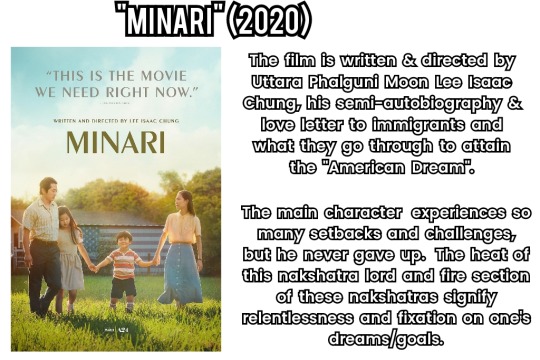
The "American Dream" refers to the belief that anyone, regardless of their socio-economic status and background, can achieve their dreams and make a better life for themselves in a society where upward mobility is accessible to all. The core ideals of this belief are explored in the film The Pursuit of Happyness, starring Uttara Phalguni Sun Will Smith who plays a struggling salesman rising from poverty to attaining professional success as a stockbroker — his character being driven by persistent effort, ambition, and belief in upward mobility.


The theme of the human spirit's resilience in the pursuit of personal dreams is also seen in the film Forrest Gump, starring Uttara Phalguni ASC Tom Hanks who plays a low IQ man who goes through many challenges and still never gave up on his dreams.
Sun nakshatras are more commonly associated with strong themes of ambition, leadership and success.

Aja Naomi King has Uttara Ashada Sun and Uttara Phalguni Moon, making her a dominant fire rashi native. She portrays the character Michaela Pratt in How To Get Away With Murder. She is a young woman who is an ambitious overachiever, possessing an intense fire in her and is relentless in chasing after her goals with focused determination.

The character Paris Geller from Gilmore Girls, portrayed by Uttara Ashada Moon native Liza Weil, is known for her relentless ambition, being an aggressive perfectionist, and possessing a fear of failure which mirrors Michaela Pratt’s personality, often the cause of her clashing with others.

Sun natives are able to sacrifice and delay gratification for their goals. The elephant tusk of Uttara Ashada represents enduring strength, the nakshatra also being in the first section of the Capricorn rashi (Saturn supporting themes of endurance and delays). Uttara Phalguni's symbol is a bed or hammock, which represents the rest after hard work and generosity, completing the journey from Purva Phalguni in this final stage. And Krittika being the blade, or razor, signifies it as a cutting force able to slice through obstacles, fuelled by a desire to execute excellence.

Daniel Plainview in There Will Be Blood exemplifies the darker, more ruthless and capitalistic side of this "American Dream" — operating more Ketuvian as he is portrayed by Ashwini Moon native Daniel Day Lewis, drawing parallels with Ashwini Moon Christian Bale in American Psycho (further emphasizing why the Sun exalts in Ashwini, as Ashwini possesses this pure, ungovernable and all-consuming masculine energy which can become self-building).

The book Oil! follows the son of an independent oilman who initially idolizes his father's rise to power which has a rags-to-riches quality to it. The book highlights the nefarious strategies that oilmen employ through the main character's sympathy towards the underdog people (oilfield workers), a solar theme which will support further points I'll be touching on. But this corruption of the self from accumulating so much intoxicating power is definitely the darker side of Sun nakshatras.
The character Plainview uses oil as a lucrative resource and leverages it to build his empire, also coming from humble beginnings. He embodies this 'self-made', hyper-independent archetype in which hard work highlights one's determination and ability to turn opportunities into wealth. But the writer of the film, and the author of the novel Oil!, shine light on the emptiness and loneliness of this accumulation.

In the story, The Great Gatsby, the character Jay Gatsby initially comes from a poor background, and he meets a high-status woman who he falls in love with. She becomes one of the reasons for his drive, shaping his desire to escape poverty and become successful.

Uttara Phalguni's ability to outwardly evolve to positions of power and have access to things which are symbolic of pleasure and luxury emphasizes the inward radiance and resilience they possess to overcome challenges.
There is a Solar archetype which possesses a type of independence and a resourcefulness that doesn't translate into dominance, but rather into strictly following one's own path of righteousness — remaining strong willed no matter the people one is surrounded by. And there is a level of generosity and duty to this archetype, as Surya, the Hindu Sun god, embodies Dharma (which is related to duty, righteousness and upholding truth).

Will Turner fully embodies this archetype. Even when he's surrounded by pirates, and learns of his familial background of piracy, he stubbornly sticks to what he believes is right. His character has consistently been a strong moral compass in the franchise, upholding righteousness and truth — pointing to the higher leadership and moral integrity important in Uttara Ashada, as this nakshatra is ruled by the Vishwadevas, who are believed to reward those who follow moral principles and righteous paths.
Being burdened with so much duty, Surya (the Sun god) has to endure distant relationships with his close familial bonds. Will Turner mirrors this exactly, his duty as the Captain of the Flying Dutchman (a powerful evolution of his character as he initially started as a humble blacksmith) binds him to a duty higher than his mortal life. Because of this, he could only see his son and wife every once a decade, much like how Surya cannot be close to his sons and spouses.

A lot of sacrifices that they endure include cutting away human attachments, although this archetype is moreso explored from the hyper-independent lens in Claire Nakti's Sun Dominant Men video, as they voluntarily become absent fathers/deadbeats from their inherent selfishness — very much opposing the ideals of many Sun gods, but a correct negative manifestation nonetheless.
All Sun gods support this solar archetype of justice, leadership and source of nourishment. Helio, in Greek mythology, personifies the Sun, bringing light to the world, also regarded as the god of sight. Surya is a source of vitality and justice. Ran, the Egyptian Sun god, serves as a great protector, encompassing intense sun rays which ward off evil.
Characters which embody this protective, superior force are often played by Ketu and Sun nakshatra natives (and as Ketu nakshatras are seen as dominant forces in nature, we see how Sun nakshatras adapt in isolation, and become dominant as well, using tools and resources to remain resilient). Claire Nakti already explored this with Mula's connection to Hercules, while I connect the nakshatra Uttara Ashada to characters such as Robin Hood & Tarzan. Just as the Sun gods symbolize a life-giving energy which keeps stability in the universe, George of the Jungle and Tarzan are characters who both protect the jungle and its inhabitants from poachers and other humans with bad intentions — their presence alone warding off evil. Both characters serve as guardians to ensure harmony in the jungle.

The elephant tusk (of Uttara Ashada) often signifies, in many cultures, the protection of wildlife, especially from those who want to exploit and dominate nature. It also symbolizes a tool for survival, and it is associated with higher stature and power. This theme of one being the source of life and resources is seen in Robin Hood, a character which has Uttara Ashada influence. Robin Hood is known for safeguarding the well-being of his community, ensuring that their nourishment and dignity is preserved as he distributes wealth from the rich to the poor.

The bridge between Purva Ashada and Uttara Ashada could be represented by the purpose of Sagittarius — the archer aiming straight for victory. Uttara Ashada can be the release of the arrow, the culmination of focus to execute the final victory, as its stars lie close and pointing to the Galactic Center (signifying the bullseye). Uttara Ashada carries the final stage of the archer's triumph, embodying this legacy after the swift release of the arrow.

Much like Tarzan and George, Robin Hood lives in nature. Sun makes one completely self-sufficient, free from societal and religious roots which holds one back from finding their true essence. And the forest or woods represent a place one can explore their true selves and burn away what's false. The dominance of the Sun is seen in these characters' ability to comfortably live in such a place full of hidden threats like wild animals, bandits, or poachers. While for Ketu this theme signifies their huntress and taming power over the wild, for Sun it signifies their radical freedom and adaptability. Living in the forest, Robin Hood represents the figure of the outsider.

In the 2011 film Red Riding Hood, the character Peter is a woodcutter who embodies the archetype of the lone wolf. He is portrayed by Krittika Moon & Uttara Ashada ASC native Shiloh Fernandez. He knows the forest very well, and is often associated with the pure, wild aspects of it. He is very much like George of the Jungle, in that his love interest is also played by a Magha native, which I found this Sun-Ketu association very interesting.

His free nature and rough exterior (representative of his authenticity, making him a misfit in society) is what misleads the viewers into thinking that he is the werewolf that's been killing the townsfolk, but the truly animalistic and consuming force of the story is the character played by Ashwini Moon Billy Burke.
This lone wolf archetype supports their ability in being resourceful within their surroundings, often seen in survival stories in which the Solar native is stranded and is literally isolated from civilization.

Blue Lagoon (1980) is a survival film about two children living on an island after a shipwreck. Krittika Moon Christopher Atkins plays Richard, who becomes deeply attuned to the rhythms of the island, learning how to make use of the natural resources for their survival.
In the film Mad Max: Fury Road, Uttara Phalguni Sun Tom Hardy embodies this lone wolf archetype through the character Max. The story has a hyper-patriarchal system which is built around the hoarding of resources and exploitation of others. Max is completely removed from this society, prioritizing his own survival and maintaining his autonomy above all else.

His detachment makes him representative of someone who can solely rely on their resourcefulness and sharp instincts. This film is great as it stars two Phalguni natives; the character Furiosa being portrayed by likely Purva Phalguni ASC native Charlize Theron. Her warriorship is based around seeking a better future for the feminine, which is marked by love and autonomy.
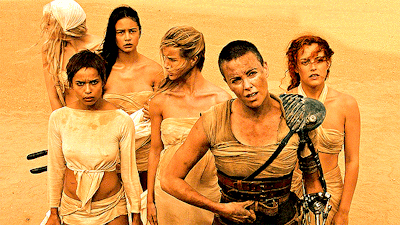
Furiosa, being Venus and an Ugra nakshatra, represents the fight for liberation and happiness, particularly on the freedom of Immortan Joe’s enslaved women, and her own freedom from such a restrictive society unfit for the feminine. The women's rejection of the patriarchy mirrors Max’s independence outside the system. Initially, he aligns with her merely out of necessity as she and the wives possess resources beneficial for his survival. But he treats them as equals, recognizing their autonomy and agency. Max's collaboration with them emphasizes Uttara Phalguni’s purpose of creating alliances and partnerships for higher purposes, supporting the journey that started from Purva Phalguni nakshatra.
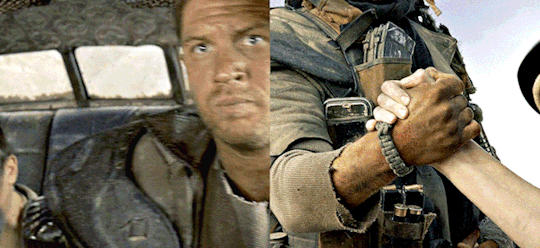
After aiding Furiosa, Max returns to his hyper-independent lifestyle; burning the attachments he formed with the women, and returning to his path that is away from the society.
This ability to survive by oneself, to reshape one's environment, mobilizing resources even in barren circumstances, is a theme for Sun nakshatras — further exaggerating this lone wolf, mysterious archetype (as seen with Max in Mad Max: Fury Road and Peter in Red Riding Hood).

The Sun is the natural giver of light and energy, but it does not receive light in return. Solar natives, often being so self-sufficient, give to others but rarely lean on them for much support. The character Elliot Alderson from Mr. Robot is a hacker, his final achievement towards the end of the series making him a modern day Robin Hood. His mission to expose corruption and empower the oppressed is akin to the Sun being a source of illumination, Krittika especially being known to cut away illusion. He is played by Krittika Sun Rami Malek.

Elliot remains emotionally isolated, as he has noticed that anyone who gets too close to him burns in the end — very similar to how the Sun god, Surya, burns and shines too brightly that his wife, Samjna, runs away from him. Elliot's solitary nature makes him feel extreme loneliness, but he maintains a distance from others, his hyper-independence stemming from his traumatic past and his mistrust of others.
There's a genre of film which explores the cause of such imbalanced independence, much like how Max's reason for burning attachments being due to trauma and previous lose. Christmas Carol movies often have Sun natives casted in them, portraying characters that possess a level of misanthropy and selfishness which drive them into further isolation.
The famous character, Ebenezer Scrooge, is a miserly, bitter, and cold-hearted old man who despises Christmas as it is associated with things of generosity and happiness. His name has literally become synonymous with selfishness, cynicism, greed and a lack of compassion. Ebenezer leads a solitary life, being estranged from family and detached from community due to his cold demeanour and focus on material gain. A Christmas Carol is a tale of Scrooge's redemption through three spirits, who highlight moments of lost joy, compassion, and the choices that led to his current misery and his future lonely funeral.

After his epiphanies, thanks to the spirits who took him on a journey of rediscovery, his redemption is seen when he wakes up on Christmas morning being transformed into a generous, joyful person — helping the community and reconnecting with his family. His renewed sense of compassion from being such a mean, wicked old man could be interpreted as the Sun burning away negativity to rekindle the warmth and generosity that the Scrooge has repossessed within himself. This tale is retold in the 2008 Barbie in a Christmas Carol, in which the character Eden Starling is a glamourous singer who is extremely self-centered and arrogant. She does not believe in Christmas and even refuses her employees from celebrating it.

She is voiced by Uttara Phalguni Sun and Uttara Ashada Moon native Morwenna Banks. Much like the timeless festive tale, three ghosts visit her on Christmas Eve, taking her on a journey through her Past, Present and Future. This leading her to have epiphanies regarding how much of her light had been dimmed and how lonely her future will be. These scrooge characters were once so brilliant and bright, but their inner light became eclipsed by bitterness, lose, or regret, leading to a life devoid of merriness — and being cold and frosty towards others.
Life’s challenges, such as betrayal, lose or disillusionment, leads these solar natives to retreat into isolation and despair. In the film Jingle Jangle, the character Jeronicus is a vibrant inventor, radiating so much brilliance and inspiring those around him.

Though not as cruel as Scrooge was, his arc still mirrors the Christmas Carol tale, in that his light becomes renewed. His young and redeemed older self both embody the festive spirit and joy of Christmas, acting as conduits for the magic, wonder, and generosity for the season.
The transformative journeys of these solar characters also extend to the Grinch, from the 2000 film How the Grinch Stole Christmas, the character portrayed by Uttara Ashada Sun native Jim Carrey. The tale was originally created by Uttara Phalguni Moon native Dr Seuss, first published in 1955.

The Grinch absolutely despises Christmas, much like Scrooge, being deeply consumed by resentment and envy while he isolates himself from the joyous Whoville community. His redemption is seen in him integrating himself into the community with newfound warmth, after experiencing an epiphany through a little girl’s unwavering joy and forgiveness. He returns the gifts he has stolen, realizing that Christmas is about love, not material possessions.
There are solar symbolisms in Christmas traditions, besides the gift-giving and festive feasting. These traditions can be traced back to ancient winter solstice celebrations, which made the symbolic rebirth of the sun, as the daylight hours began to increase after the winter solstice.
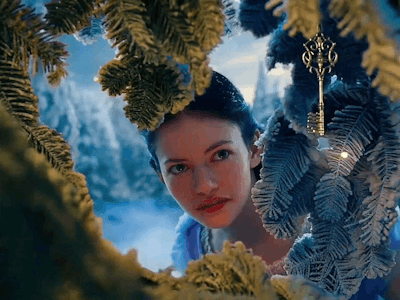
In 2018's The Nutcracker and the Four Realms, the character Clara, portrayed by Krittika ASC Mackenzie Foy, experiences a journey which can be symbolic of the winter solstice. The story begins with Clara in a dark emotional space following the death of her mother, this darkness being much like the world descending into the longest night at the winter solstice. But Clara seeks the key to her mother’s gift, which signifies as a source of life, fertility, and illumination that unlocks potential — the gift quite literally being a golden egg. Clara and her companion must retrieve the key and restore harmony to the unstable magical land. This theme of restoration, new hope, and redemption in a lot of these scrooge films, is symbolic to the Sun’s rebirth during the solstice — the return of life.
The practice of illuminating the Christmas tree with lights and ornaments mirrors the Sun's return, symbolizing a brighter future with the coming year. The infectious joy and generous acts during this festive season reflect the gratitude for the life-sustaining force that the Sun is, and the light for new hope it represents, as it promises abundance for the year ahead. The twin deities of Ashwini nakshatra are associated with rejuvenation, new beginnings, and vitality; this resonates with solar qualities, further explaining why Sun feels naturally at home in Ashwini. The Ashwini Kumaras are divine healers who bring restoration and renewal, just as the Sun sustains all living beings with its energy.
The character Robin Hood, much like the Sun, is a symbol of hope for the downtrodden, fighting off the darkness of evil and corruption. He sustains the spirit of his people by redistributing wealth and restoring their faith in justice, consistently being a force of resistance. The Sun serves as a profound symbol of redemption, perfectly embodying the cycle of renewal and the promise of transformation on earth. Its daily rise eliminates darkness, rejuvenating life and reinstituting balance in nature after its lengthy absence. Sun illuminates the paths which signify growth, healing, and change. The very pure symbolism of the Sun makes it an enduring metaphor for hope, forgiveness, and the power to provide. Robin Hood's actions literally restore the imbalance, which was created by corruption and darkness, giving the poor a chance to continue building their lives. Robin Hood stands as a symbol of light against injustice, signifying a timeless reminder that even in the face of darkness, renewal and justice are always within reach. The character Elliot Alderson is also the perfect representation of this, for anyone who has watched Mr. Robot (the only series I'd happily recommend to anyone — it's very dark though).
Merry belated Christmas! 🎄
#krittika#uttara phalguni#uttara ashadha#aries#taurus#leo#virgo#sagittarius#capricorn#sidereal astrology#vedic astrology#astrology#astro observations#astrology observations#vedic observations#nakshatra series#nakshatra observations#vedic astro observations#vedic astro notes#sun#ashwini#ketu#purva phalguni#purva ashada#venus
332 notes
·
View notes
Text
Virgo Rising
💚The personality here is intelligent, analytical, service oriented , methodical , organised & seeks to balance what lies underneath.
💚Possesses the Knack of discriminative intelligence.
💚Seeks deeper, intuitive , close , soulful one on one relationships . Pisces on the seventh cusp indicates the wish to merge with the other to experience true oneness in relationships and thus life.
💗Have beautiful features and a slim fit physique. The face is symmetrical , seeks to harmonise the issues within the family and thus may find himself in trouble sometimes.

💗Have deep penetrating intelligence and knows the essence of healthy boundaries.
💗Have a open heart & wish to be of true service to others. Mostly introverted unless other placements indicate otherwise. Can be very judgemental, self critical at times.
💚With Saturn ruling 5th & 6th house. The self creativity, intelligence and the outflow of past karma for resolution which is represented by the 6th House sign Aquarius . The personality has chosen to rebalance it's karma more than the rest of rising signs. Thus this rising sign is set on a chosen positive path of retribution which with time will give inner balance & peace once we understand the essence of our overall Karma.
💚The partner is intuitive , spiritual, wise & there's some heartiness & other wordlyness in the partnership.
💚The personality adds practicality , a sense of stability and the partner adds kindness , love , acceptance & a sense of letting go. Thus a deep balancing essence.
💗Once both decide that a space in relationship is to be kept for the infinite within them both , it can be a beautiful relationship. When both can appreciate each other's differences and similarities , then it becomes even a more enriching experience.
💗These personalities though outwardly shy , reserved are quite passionate inside and also love deeply if they choose to love you.

💗These personalities are also found in divination , astrology, tarots and the occult . They are intuitive & can connect will with their subconscious and can guide others.
💚They tend to befriend friends who are emotionally sensitive , attuned , homely and caring . Loves belongingness in the house of friendship & marketplace.
💚With sun being the Lord of the 12th cusp. They are inwardly very bright , intelligent , creative and in outward world they may struggle to find their true confidence in self. Relationship with father can have a sense of absenteeism a bit.
💚This sign has three Nakshatra's abiding.
Uttaraphalguni - Ruled by Sun . Guided by Solar Diety Dev Aryaman.
Hasta - Ruled by Moon . Guided by Solar diety Savitur Dev.
Chitta - Ruled by Mars . Guided by Diety Vishwakarma - the celestial architect.
#astrology#astro observations#astrology observations#counseling#vedic#vedic astro notes#astro notes#vedic astro observations#astrology blog#astrologer#nakshatra#virgo
88 notes
·
View notes
Text
Uttara Phalguni - The Fearless Knight

Degrees: 26°40 Leo to 10°00 Virgo Deities: Aryaman, God of patronage; Nandi, Shiva's sacred bull, the devotional worshipper. Vimshottari Lord: Sun Sounds: टे te, ट�� to, पा pa, पी pi The core meaning: you are endowed with passion and courage. You do not hesitate to channel this strong energy into just causes. You fight, you support, you analyze very well with your peers. When a gigantic enemy stands in your way and everybody gives up, you stay and go for it. Sometimes, your passion may entangle you in unhealthy amorous adventures and you will regret it deeply. Because you are an Uttara Phalguni native: making the right moral choice is what makes you thrive. Nothing else. Qualities: responsible, analytical, quick-thinking, courageous, insightful, hard working, charismatic, supportive. Affliction: overindulgent, inflexible, nervous, immoral, stubbornness, critical, restless, resentful. Interest in humanitarian/environmental/animal causes, counseling, music, research.
#astrology#vedic astrology#jyotish#nakshatras#sidereal astrology#uttara phalguni#uttara phalguni nakshatra#leo#virgo
54 notes
·
View notes
Text


Surya
Nakshatra/Star – 12. Uttara Phalguni (26°40' Leo – 10°00' Virgo)
Sun is the Planetary Lord of Uttara Phalguni nakshatra.
Most of warlike qualities, such as anger, valor, aggression, fearlessness, urge to conquer and competitive spirit, are commonly shared by Surya and Uttara Phalguni.
However, Uttara Phalguni, unlike Surya’s other Nakshatra Krittika, has a more forgiving attitude and is always more interested in upholding harmony and honor, rather than final victory. Protective and nourishing aspect of Surya manifests through Uttara Phalguni. It is gentle but firm. This nashatra is always ready to serve, but only from a position of superiority. Uttara Phalguni Nakshatra Traits
1. The symbol for this service oriented lunar mansion is a healing bed or two legs of a cot
2. This is the “social worker” nakshatra and possess great skills in the healing arts and counseling fields.
3. Naturally, this asterism is called the "Star of Patronage" for their love of humanity and caring sincere nature.
4. The deity of this asterism is Aryaman, the God of Patronage, Honor and Kindness.
5. There is a tendency to be controlling and very stubborn in relationships.
6. This nakshatra is associated with state health officials, social workers, philanthropists, sales and public relations managers, writers, actors and media personalities
Themes for today
1. A good day to have positive thoughts that would manifest in the coming days.
2. Good day for wearing new garments or jewelry
3. Not a good day for confrontation or hash behavior.
4. Not a good day to lend money!
Fun Facts
1. They can be obsessive with cleanliness and can be inconsiderate and disdainful.
2. Their houses/ habitats will have motifs (art work, painting, pillow cover, bed sheets, etc) of Elephants, Stones and Trees.
3. They would be inclined to snacking especially salty food items
4. This nakshatra is strongly associated with signing of agreements, legal documents and contracts.
5. They have a tendency to be associated with loudspeakers and megaphones.
6. They rely on rationality, knowledge and wisdom and are careful in spending money.
25 notes
·
View notes
Note
Funny how another name of Savitr is Savita
So maybe the Gods tease him sometimes for having a fem name like
Mitra: O Savita deviiiii XDD Savitr: Mitra I SWEAR TO MYSELF-
LMFAOOOO WHAT im sorry that's very... Funny 💀💀💀😭
But would it be funny if Mitra and Aryaman sometimes forces him in pretty pretty clothes and make him look like the Devi he is :3
Saraswati helps them idk why
13 notes
·
View notes
Text
Uttara Phalguni: Devotion, affection


The Phalgunis are the first pair of the 27 nakshatras - later coming the Ashadas, the Bhadrapadas.
Before Uttara Phalguni comes Purva Phalguni, symbolized by the front legs of a bed. Being half of a pair, Uttara Phalguni (symbolized by the back legs of a bed) is concerned with union - happy partnerships and communities. The attitude of Uttara Phalguni is a response to Purva Phalguni, a sign also concerned with union, but in a different way. Purva Phalguni has more to do with the initial attraction or "spark" that we first experience in new relationships. Uttara Phalguni comes along after the Purva Phalguni spark has died down and strives to make the relationship last beyond the initial excitement.
The bed as the symbol of Purva and Uttara Phalguni
The symbology of the bed encompasses themes of both of the Phalgunis. Love, marriage, sex, pleasure for yourself and others, rest, and rejuvenation are all things that can be associated with a bed. Purva Phalguni is more likely to see the bed as a supportive environment for weird kinky sex after a date. Uttara Phalguni seeks to sustain this attraction and, ultimately, transform the bed into one shared between two deeply committed partners.

Part of what makes Uttara Phalguni different from and complementary to Purva Phalguni has to do with their planetary rulerships.
Uttara Phalguni is ruled by the Sun. The Sun represents very masculine qualities and principles - the ego, your sense of self. It projects itself outward into the solar system, representing the doing nature of the Sun as opposed to the being nature of the more feminine planets (Venus, the Moon...). The Sun is the archetype of the father and embodies classically paternal qualities - someone generous, expressive of love and pride, who treats children and loved ones with respect and care.
Purva Phalguni is ruled by Venus, the planet embodying archetypal femininity - things like beauty, love, and pleasing aesthetics. These are the sexy and exciting things that help kick start new relationships and draw us to one another in the first place. Purva Phalguni magnetizes a companion towards her with her innate, seductive qualities and Uttara Phalguni follows close behind to build the relationship into something long-lasting with it's more fatherly approach.

Aryaman: God of community, friendship, marriage, partnership.
The ruling deity of Uttara Phalguni is one of the Adityas, Aryaman. He is brother to Bhaga, the ruling deity of Purva Phalguni. The Adityas are a group of 12 deities and make up (some of) the offspring of Aditi, a primeval goddess and mother to many gods.
Hinduism is known for having.. a lot of different gods. 330 million is a common estimate. With this in mind, it isn't surprising that some deities are not well-known. Aryaman is an important solar deity in the Vedic pantheon but relatively little information is known about him today. Some important information about Aryaman can be derived from his name, though.
The Sanskrit root of the name Aryaman is -Ri, meaning to go forward or to progress. The word arya, stemming from -Ri, means to come together or to form a bond. Putting the two together, the meaning of Aryaman is to progress towards union. -Ri can also mean something that is true and can stand on it's own. Aryaman as a name and deity carries the essence of truth. Aryaman is all about relationship and partnerships, so truth should be thought of with this in mind. True in the context of relationships means reliable, trustworthy, dedicated - prerequisite qualities to be part of a real partnership. This is what Aryaman embodies and stands for as a deity.
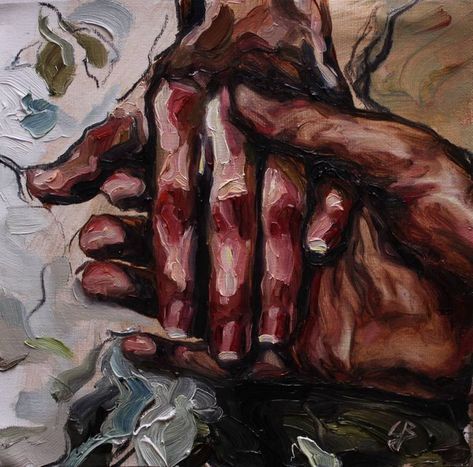
A song to listen to that has Uttara Phalguni vibes: If the House Burns Down Tonight by Switchfoot
I see the smoke piling up in the rear view mirror Yeah but I ain't ever seen it any clearer If the house burns down tonight I got everything I need when I got you by my side And let the rest burn
_______
Credit is due to Vic Dicara for most of the information I talked about here. If you're interested in learning more about Vedic astrology, his YouTube channel is a great resource to do that.
48 notes
·
View notes
Note
I mean yeah considering Varun used to be considered the Supreme one before Indra and Vishnu
No but seriously
Where IS Arya. I miss him :'(
Aryaman third wheeled Mitra-Varuna so hard he eventually got completely left out of the original trio ☠️
Justice for Arya 😞✊
Apparently the three of them were supposed to be Rigvedic Supreme Deities
Honestly, R I.P. Arya
Alexa, Play "Ye dosti hum nahin todenge"
4 notes
·
View notes
Text
What are Nakshatras and What is Their Importance in Astrology?

Understanding Nakshatras
Nakshatras, also known as lunar mansions, are a fundamental concept in Vedic astrology. Each Nakshatra is a unique 13°20′ segment of the ecliptic, through which the moon passes during its 27.3-day journey around the Earth. The moon spends approximately one day in each Nakshatra, influencing the daily dynamics of our lives. There are 27 Nakshatras in total, and each is divided into four parts called padas. These subdivisions are crucial in understanding the intricate details of astrological predictions and personal horoscopes. For those interested in deepening their knowledge, enrolling in a Nakshatra course online can provide valuable insights and comprehensive understanding of these celestial divisions.
The Significance of Nakshatras in Vedic Astrology
Nakshatras hold a pivotal role in Vedic astrology due to their profound influence on an individual’s personality, behavior, and destiny. They are considered more precise than zodiac signs, offering detailed insights into various aspects of life. Here are the key reasons why Nakshatras are vital:
Personality and Traits: Each Nakshatra is associated with specific traits, characteristics, and deities that govern them. These attributes shape an individual’s core nature and behavioral patterns.
Career and Profession: Nakshatras provide insights into the most suitable career paths and professional inclinations based on inherent strengths and weaknesses.
Relationships and Compatibility: They play a crucial role in determining compatibility in relationships, particularly in marriage, by analyzing the Nakshatras of both partners.
Health and Well-being: Certain Nakshatras are linked to specific health issues and can indicate potential medical concerns or strengths in one's constitution.
Life Events and Timing: Nakshatras help in predicting significant life events and the most auspicious timings for various activities, such as starting a new venture, marriage, or travel.
Exploring the 27 Nakshatras
Ashwini
The first Nakshatra, Ashwini, is ruled by the Ashwini Kumaras, the celestial healers. People born under this Nakshatra are known for their swift actions, vitality, and healing abilities.
Bharani
Bharani is governed by Yama, the god of death. This Nakshatra signifies transformation, discipline, and a deep understanding of the cycles of life and death.
Krittika
Ruled by Agni, the fire god, Krittika symbolizes purification and courage. Those born under this Nakshatra possess strong determination and leadership qualities.
Rohini
Rohini, ruled by the moon, represents growth, beauty, and abundance. Individuals with this Nakshatra are often artistic, nurturing, and possess a charming personality.
Mrigashira
The deity of Mrigashira is Soma, the moon god. This Nakshatra is associated with curiosity, exploration, and a quest for knowledge.
Ardra
Rudra, the storm god, governs Ardra. It is a Nakshatra of transformation, emotional depth, and the ability to overcome challenges.
Punarvasu
Punarvasu is ruled by Aditi, the mother of gods. It signifies renewal, prosperity, and a nurturing spirit.
Pushya
Governed by Brihaspati, the guru of the gods, Pushya represents wisdom, spirituality, and nourishment.
Ashlesha
Ashlesha, ruled by the serpent god, signifies intuition, secrecy, and a deep connection with the subconscious mind.
Magha
Ruled by the Pitris (ancestors), Magha is associated with power, leadership, and respect for traditions.
Purva Phalguni
Bhaga, the god of fortune, governs Purva Phalguni. It signifies creativity, pleasure, and social connections.
Uttara Phalguni
Ruled by Aryaman, Uttara Phalguni represents friendship, generosity, and a strong sense of duty.
Hasta
Hasta is governed by Savitar, the sun god. It symbolizes dexterity, craftsmanship, and a keen intellect.
Chitra
Chitra, ruled by Vishvakarma, the celestial architect, signifies creativity, beauty, and the power of transformation.
Swati
Vayu, the wind god, governs Swati. This Nakshatra represents independence, flexibility, and adaptability.
Vishakha
Ruled by Indra and Agni, Vishakha symbolizes determination, ambition, and the ability to achieve goals.
Anuradha
Anuradha is governed by Mitra, the god of friendship. It represents cooperation, devotion, and harmonious relationships.
Jyeshta
Ruled by Indra, Jyeshta signifies power, seniority, and a protective nature.
Moola
Nirriti, the goddess of destruction, governs Moola. This Nakshatra represents deep inquiry, transformation, and a quest for truth.
Purva Ashadha
Ruled by Apah, the water god, Purva Ashadha signifies invincibility, courage, and a quest for victory.
Uttara Ashadha
Uttara Ashadha is governed by Vishvadevas. It represents enduring success, righteousness, and leadership.
Shravana
Ruled by Vishnu, Shravana symbolizes listening, learning, and knowledge dissemination.
Dhanishta
Dhanishta, governed by the Vasus, represents prosperity, musical talent, and societal contributions.
Shatabhisha
Ruled by Varuna, the god of cosmic waters, Shatabhisha signifies healing, mystery, and depth.
Purva Bhadrapada
Purva Bhadrapada is governed by Aja Ekapada. It symbolizes transformation, spirituality, and intense energy.
Uttara Bhadrapada
Ruled by Ahir Budhnya, Uttara Bhadrapada signifies wisdom, depth, and a contemplative nature.
Revati
Revati, governed by Pushan, the protector of travelers, represents prosperity, protection, and a nurturing spirit.
GuruJee Gyan’s Comprehensive Nakshatra Course
Why Choose Our Nakshatra Course?
At GuruJee Gyan, we offer a meticulously crafted nakshatra course designed for both beginners and advanced learners. Our course covers all 27 Nakshatras in detail, including their four padas. Here’s why our course stands out:
Expert Instructors: Learn from seasoned astrologers with decades of experience in Vedic astrology.
Comprehensive Curriculum: Our curriculum is designed to provide a deep understanding of each Nakshatra, its significance, and its practical applications.
Interactive Learning: Engage in interactive sessions, live Q&A, and personalized feedback to enhance your learning experience.
Flexible Schedule: Our online course allows you to learn at your own pace, making it convenient for everyone.
Certification: Receive a certificate upon completion, validating your knowledge and skills in Nakshatra astrology.
Course Outline
Introduction to Nakshatras: Understanding the basics and the historical significance of Nakshatras.
In-depth Study of Each Nakshatra: Detailed exploration of all 27 Nakshatras, including their myths, symbolism, and influence on personality and life events.
Nakshatras and Padas: Analyzing the four padas of each Nakshatra for a more granular understanding.
Practical Applications: Using Nakshatras for horoscope analysis, matchmaking, and predicting life events.
Advanced Techniques: Learning advanced techniques for interpreting Nakshatras and integrating them with other astrological tools.
Enroll in the Best Nakshatra Course Online
Whether you are a beginner looking to explore the fascinating world of Vedic astrology or an advanced learner aiming to deepen your knowledge, our best nakshatra course online offers the perfect platform. Join GuruJee Gyan today and embark on a journey to master the intricacies of Nakshatras.
For more details and to enroll in our course, visit GuruJee Gyan’s Nakshatra Course.
#Nakshatras#Nakshatras Course#Nakshatras Course Online#What is Their Importance in Astrology#Importance in Astrology
5 notes
·
View notes
Text
today, it is this — all of us strangers (2023) dir. andrew haigh absolutely decimated me. this film and koreeda's monster might be my top two favorites of this year. here are some excerpts from some reviews that made me tear up all over again even though it's been days since the screening:
tiffany's review:
"'All of Us Strangers' argues that beyond all this inevitable sadness is a force to be reckoned with: hope. The hope that we’ll get the closure we’ve needed. The hope that we’re not all alone. The hope that even after everything, we are still ultimately loved and cared for."
"I am queer and the journey ahead is going to be painful. I don’t know what my parents will say to me. I don’t even know if they’ll want to talk to me, but I hope eventually they’ll learn to love me more once they know me."
coffee's review:
"Everything you never said, everything you wish you could, every trip you could’ve had, every revelation you could’ve shared, every time you went to bed and wondered what it would’ve been like if they were still here. You’d have so much to say, and there would never be enough time to say it all."
pat's deeply personal entry:
"After the screening, someone hugs me. I never appreciate this enough, physical touch, I mean. I am reminded of not just my mom but all the other friends I have made. Ash. Aryaman. Ms. Pope. They too, I come to realize, are my chosen family. I am filled with a profound sense of hope, a newfound light. Looking around, I am radiant."
"I am a closeted gay man, and I will lose my parents next year when I come out to them. But as the poet Chen Chen writes, "sometimes parents and children become the most common strangers. Eventually, a street appears where they can meet again." I am grateful for this film's hope. I am grateful to my friends who give me light."
06/10/2023
14 notes
·
View notes


